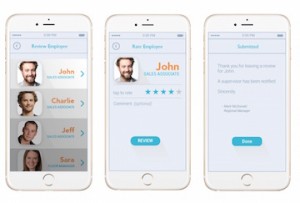 As a proponent of omnichannel conversational commerce, I’ve been fascinated by technologies that improve indoor (or in-store) customer experience. Of course, there is always a balance to be struck between “creepy” apps (which smack of unwanted surveillance and privacy invasion) and “intelligent” assistance (which brings several technologies under the control of shoppers to improve their experience). In reality, there is no black-or-white distinction between the two. The toggle is whether an indoor tracking app delivers true value to a shopper or passer-by.
As a proponent of omnichannel conversational commerce, I’ve been fascinated by technologies that improve indoor (or in-store) customer experience. Of course, there is always a balance to be struck between “creepy” apps (which smack of unwanted surveillance and privacy invasion) and “intelligent” assistance (which brings several technologies under the control of shoppers to improve their experience). In reality, there is no black-or-white distinction between the two. The toggle is whether an indoor tracking app delivers true value to a shopper or passer-by.
Here are a couple of examples. Satisfi, which started life as a company called SuperSolver, uses an indoor location aware mobile application to provide a direct feedback loop between a customer and a “the person in charge” at a business before he or she leaves the premises and Tweets or posts a review on Yelp! Reportedly popular on cruise ships or in large hospitality venues, it enables customers or clients to report a clogged plumbing fixture or to register an anonymous complaint about the service at a restaurant or bar. The system enables management to reply in a timely and efficient manner and also tracks and analyzes incidents to detect patterns and prevent future problems. The company was founded in 2013 and was initially positioned as an app providing customers in retail stores with a direct phone link to sales and support personnel.
uRevu is another company offering a mobile app to facilitate location aware reviews. Its twist is that retailers or other business establishments provide employees with wearable iBeacons (the low-power Bluetooth transmitters endorsed by Apple). Then shoppers who have downloaded the uRevue app can detect the identity of the service person, immediately rate them and have the feedback provided immediately to the relevant supervisors. uRevue positions its app plus back-end analytics as a win-win whereby customers have an easy mechanism to get their feedback to a business establishment’s management and, in turn, management can identify the employees that are doing their jobs well (presumably to award them) and those that need some sort of remedial action.
This is more evidence of how the Bluetooth Low-Energy (BLE) aggregated footprint is poised to expand to support a better mobile customer experience. The geeky, developer world is ready to popularize the integration of granular location awareness into all manner of apps. As evidence see this post explaining how PubNub – a global communications network that supports real-time communications protocols like WebSockets, Sockety.io and WebRTC data channels – can be used to enable rapid interconnection these hyper-local networks to support apps like uRevue and Satis.fi. It’s the proverbial use of “a few lines of code” to facilitate real-time streams from inside apps.
It seems like the only limits are human’s imagination (plus the inevitable pushback that we’re destined to engender from those whose privacy or standing as a good employee is threatened). The point is that indoor location technologies’ wingspan is not confined to the indoors. It is getting easier to establish direct links to management personnel or, more likely, salespeople or agents located in an “omnichannel” contact center. This brings real-time relevance to conversational commerce.
Categories: Mobile + Location

 Opus Research Welcomes Ian Jacobs as VP and Lead Analyst
Opus Research Welcomes Ian Jacobs as VP and Lead Analyst  United Airlines, TXU Energy, and Memorial Hermann Among Opus Research’s 2024 Conversational AI Award Winners
United Airlines, TXU Energy, and Memorial Hermann Among Opus Research’s 2024 Conversational AI Award Winners  Views from the NICE Analyst Summit: Introducing the Experience Continuum
Views from the NICE Analyst Summit: Introducing the Experience Continuum  Opus Research Announces 2023 Conversational AI Award Winners
Opus Research Announces 2023 Conversational AI Award Winners